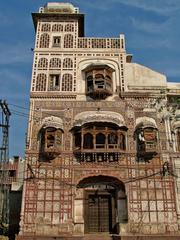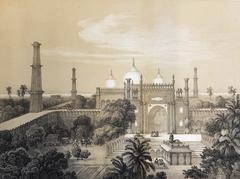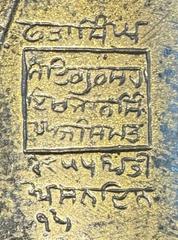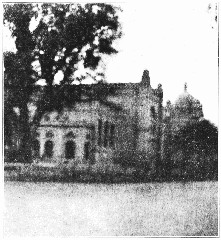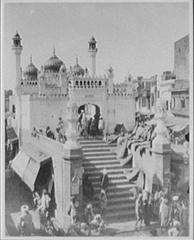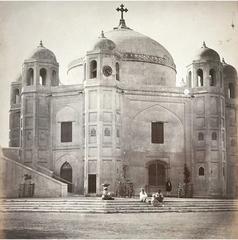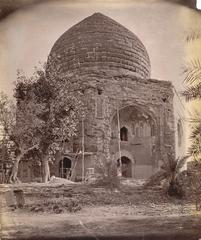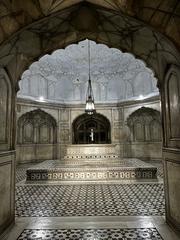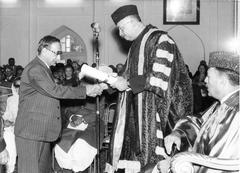Shab Bhar Mosque Lahore: Visiting Hours, Tickets, and Historical Significance
Date: 04/07/2025
Introduction
Nestled in the bustling Shah Alami neighborhood of Lahore, the Shab Bhar Mosque—literally the “Overnight Mosque” (Urdu: شب بھر مسجد)—is a living monument to faith, resilience, and community solidarity. Built overnight in 1917 during a period of communal tension in British India, this modest mosque stands apart from Lahore’s grand Mughal-era landmarks. Its story captures a remarkable episode in the city’s history, where strategic action and unity ensured the protection of religious rights under colonial rule. Today, the Shab Bhar Mosque continues to serve as a quiet spiritual sanctuary and a testament to Lahore’s layered historical and cultural identity.
This guide provides detailed information on the mosque’s background, architectural features, visiting hours, ticket information, accessibility, and travel tips, ensuring an enriching experience for those looking to discover one of Lahore’s hidden gems (Wikipedia; Atlas Obscura; Trip.com).
Table of Contents
- Historical Background
- Architectural Features
- Visiting Information
- Socio-Political and Cultural Significance
- Preservation and Community Role
- Frequently Asked Questions (FAQ)
- Practical Travel Guide
- Summary & Call to Action
- Sources and Further Reading
Historical Background
The Overnight Construction
In the early 20th century, a small plot—just over 800 square feet—became the center of a dispute between Hindu and Muslim communities in Lahore’s Shah Alami district. In 1917, both groups sought to claim the land for religious purposes. Colonial law protected established places of worship but did not favor either community if the land was vacant.
When tensions escalated, a Muslim lawyer advised that if a mosque were completed before the judge’s inspection, it would fall under British legal protection. Gama Pehalwan, a renowned local wrestler, led community volunteers to construct the mosque overnight—hence its name, Shab Bhar (“overnight”). By dawn, the prayer hall was ready. When the judge arrived, the mosque’s existence swayed the legal decision, securing the property for the Muslim community (Wikipedia; Atlas Obscura; Madain Project).
Colonial Legal Context
The British Raj typically refrained from interfering with established religious sites, relying on administrative pledges to maintain peace among religious communities. The Shab Bhar Mosque’s rapid construction was a strategic use of these policies, demonstrating how legal frameworks could be navigated through collective action (Atlas Obscura).
Enduring Symbolism
The Shab Bhar Mosque’s origin became emblematic of unity, determination, and adaptability. It remains a symbol of how Lahore’s communities responded to both external pressures and internal challenges during the colonial era.
Architectural Features
Shab Bhar Mosque is a modest, utilitarian structure, reflecting the urgency of its construction. The mosque is built above a row of shops, accessible by a narrow staircase. Its compact prayer hall holds around 12 worshippers, a testament to the spatial limitations of its urban setting (Atlas Obscura; Madain Project).
Key features:
- Plain brick façade typical of early 20th-century urban buildings.
- Simple arched entrance and minimal external ornamentation.
- Small ablution area and storage space.
- Banner with Iqbal’s poetry at the entrance, reflecting the mosque’s spiritual ethos.
Visiting Information
Hours & Admission
- Open daily: 5:00 AM–9:00 PM (with variations; best to avoid visiting during the five daily prayer times, especially Jumu’ah on Fridays).
- Admission: Free for all visitors. Donations for maintenance are encouraged.
- Continuous access: Some sources note 24-hour accessibility for worshippers, but tourists should plan visits during daylight.
Accessibility
The mosque’s upper-floor location and narrow staircase may restrict access for visitors with mobility challenges. The surrounding old city features uneven streets and limited parking; public transport or rickshaw is recommended (Trek Zone; Roads & Kingdoms).
Etiquette & Travel Tips
- Dress modestly: Men should wear long trousers and sleeves; women should cover arms, legs, and hair. Scarves are available at the entrance.
- Remove shoes before entering the prayer hall.
- Photography: Permitted in the courtyard and exterior; avoid photographing worshippers or during prayers.
- Silence: Maintain decorum inside the mosque.
- Peak times: Quieter visits are possible mid-morning or early afternoon weekdays.
Guided Tours & Nearby Attractions
- Guided tours: Not officially offered, but local guides are available for hire in the Walled City. Expect fees of 500–2,000 PKR.
- Nearby sites: Shahalami Market, Wazir Khan Mosque (17-minute walk), Sunehri Mosque (15-minute walk), Lahore Museum (19-minute walk), Mochi Gate, and the bazaars of the Walled City (Laure Wanders; Trek Zone).
Socio-Political and Cultural Significance
Shab Bhar Mosque is more than a place of worship—it is a tangible reminder of Lahore’s communal history and the power of collective agency. The mosque played a central role in fostering neighborhood identity, religious education, and social welfare. Its story is recounted in local lore as an example of resilience and adaptability in the face of adversity (Wikipedia; Atlas Obscura).
Preservation and Community Role
Maintained by the local community, the mosque continues to host daily prayers, educational activities, and religious festivals. Its understated design and intimate scale contrast with Lahore’s monumental mosques but underscore its function as a neighborhood anchor and a carrier of intangible heritage (Trip.com).
Frequently Asked Questions (FAQ)
Q: What are the visiting hours?
A: Open daily from 5:00 AM to 9:00 PM, but best to avoid peak prayer times.
Q: Is there an entry fee?
A: Entry is free; donations are welcome.
Q: Can non-Muslims visit?
A: Yes, non-Muslim visitors are welcome outside prayer times, provided they observe mosque etiquette.
Q: Is photography allowed?
A: Generally permitted, but always be respectful and avoid photographing people during prayers.
Q: Are there guided tours?
A: No official tours, but local guides can be hired nearby.
Q: Is the mosque accessible for those with mobility challenges?
A: Accessibility is limited due to stairs and narrow streets.
Practical Travel Guide
Getting there:
Shab Bhar Mosque is located in Lahore’s old city near Mochi Gate. The nearest MetroBus stop is Azadi Chowk, from where a rickshaw or short walk leads to the mosque (Roads & Kingdoms).
Facilities:
Basic ablution area; no public restrooms or visitor center. Bring your own water and use nearby restaurant facilities if needed.
Safety:
Lahore’s historic core is generally safe, with a visible police presence. Remain vigilant for petty theft in crowded areas.
Best times to visit:
October to March for cooler weather; early mornings and late afternoons for fewer crowds.
Summary & Call to Action
The Shab Bhar Mosque is a profound symbol of Lahore’s cultural and religious heritage. Its compelling origin—a community coming together to secure a place of worship overnight—demonstrates the intersection of faith, resilience, and legal acumen. The mosque’s humble architecture and ongoing role in communal life offer an intimate experience and a unique glimpse into Lahore’s past.
Visitors are encouraged to respect local customs, contribute to the mosque’s preservation through donations, and explore the surrounding Walled City for a fuller appreciation of Lahore’s history. Enhance your journey by downloading the Audiala app for interactive maps, guided tours, and up-to-date travel insights. Stay connected via our social media channels for the latest stories and tips.
Sources and Further Reading
- Shab Bhar Mosque, Wikipedia
- Atlas Obscura: Shab Bhar Masjid
- Trip.com: Shab Bhar Masjid
- Roads & Kingdoms: 17 Things to Know Before You Go to Lahore
- Trek Zone: Shab Bhar Mosque
- Laure Wanders: Best Places to Visit in Lahore
- Madain Project: Masjid Shab Bhar (Lahore)
